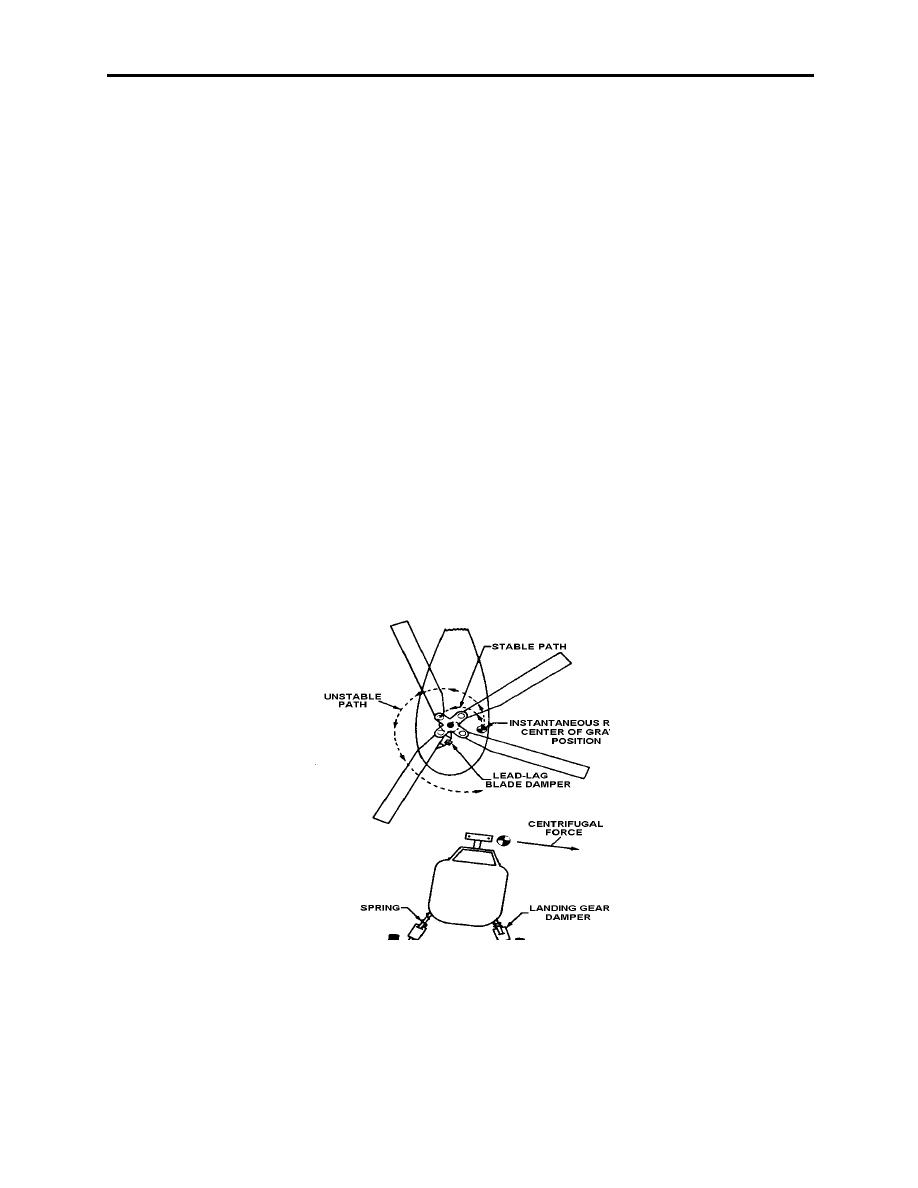 |
|||
|
|
|||
|
|
|||
| ||||||||||
|
|  CHAPTER 5
HELICOPTER AERODYNAMICS WORKBOOK
point where their combined center of gravity is displaced from the center. In most flight
conditions, this situation will rapidly right itself as the individual blades sort themselves out. In
this process, each blade leads and lags in such a way as to spiral the CG toward the mast where it
belongs.
The problem exists if the aircraft is not airborne. A gust of wind, sudden control movement
or hard landing can displace the blades. The resulting motion due to the offset centrifugal force
may be just at the right frequency to rock the airframe on its landing gear.
Figure 5-7 illustrates this situation. Once this occurs, these two motions get in step, causing
the CG to spiral outward violently, producing a rotating force at the rotor hub, which can shake
the aircraft to pieces almost immediately.
Despite this dire possibility, ground resonance does not happen every time it has an
opportunity; just often enough to scare everyone concerned. The first recorded instance was in
the 1930's, when a Kellett autogyro apparently hit a rock while taxiing. This accident attracted
the attention of scientists, who eventually produced a mathematical and physical understanding
of the phenomenon. They found ground resonance can be prevented with damping, but the
damping must be used in the rotor around the lead/lag hinges and the landing gear.
As far as the pilot is concerned, prevention consists of making sure all dampers are
operational during the preflight inspection. If an oscillation is detected and the aircraft is up to
flying rpm, the primary recovery method is to lift off. An alternate method is to land, secure the
engine, and apply the rotor brake. These actions should bring the rotor system back into balance.
Figure 5-7
5-8 FLIGHT PHENOMENA
|
|
Privacy Statement - Press Release - Copyright Information. - Contact Us |